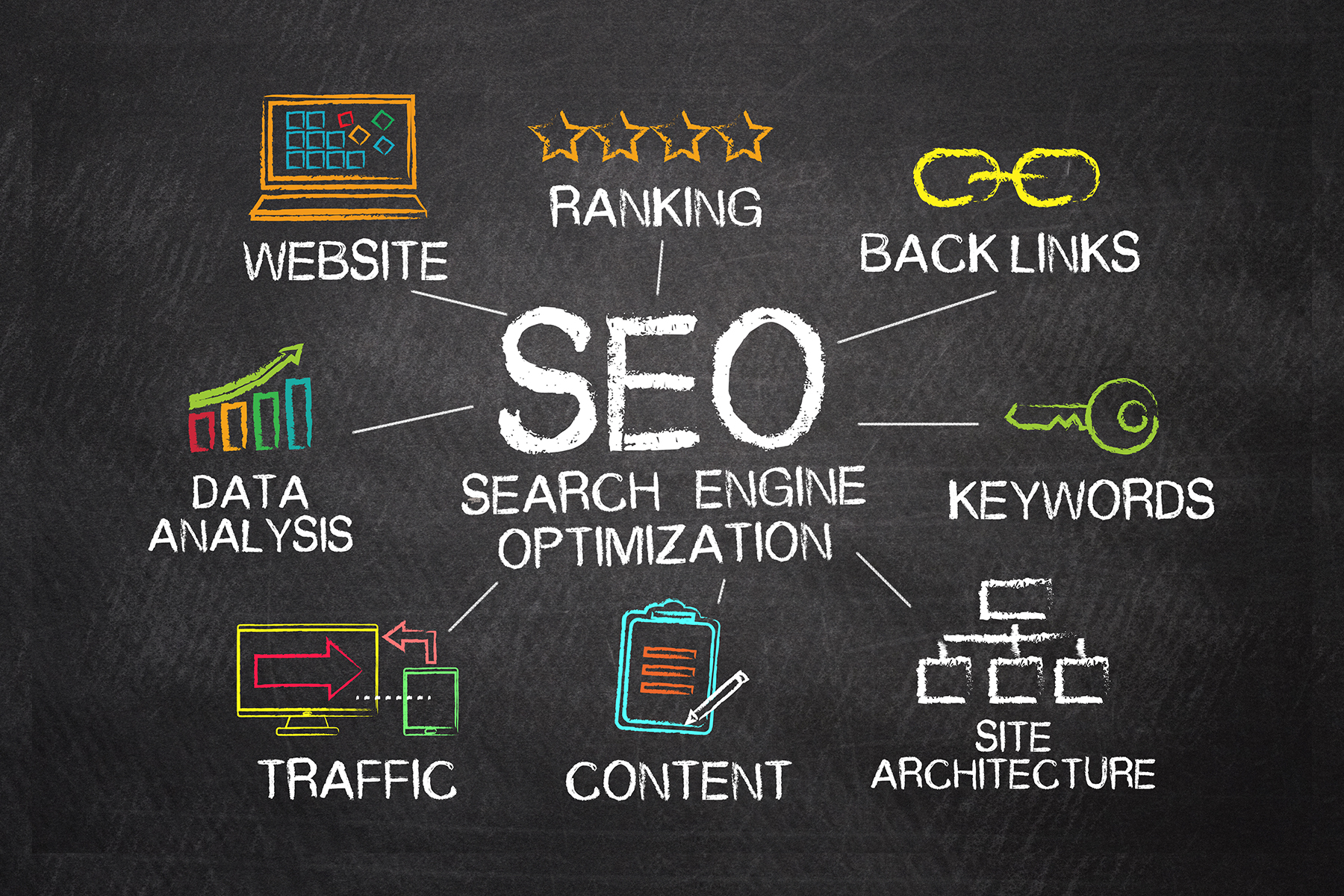Since 2011, we’ve helped numerous businesses by acting as their SEO or as their SEO consultant. We know that operating a strategic SEO campaign is crucial for any business that hopes to drive more traffic to their website from search engines which will attract more customers, generate more leads, and ultimately increase revenue.
If you’re a business owner with a web presence, properly implementing the tips we’re sharing can be the start of an effective SEO strategy that will help your bottom line. First, let’s review the most fundamental aspects the process.
Know Your Target Audience
Understanding your target audience is essential to creating an effective SEO strategy. This means identifying your customers and understanding their needs. By understanding your ideal customer, we can create content that resonates with them and ultimately increase your chances of converting them into your customer.
An excellent way to start is to create buyer personas for your ideal customers. A buyer persona is a fictional representation of your ideal customer based on accurate data and research. It should include demographic information, such as age, gender, and location, as well as their goals, pain points, and decision-making process. This information can help you understand what type of content will effectively reach them.
Do Your Keyword Research!
Another important aspect of understanding your target audience is keyword research. Keyword research entails identifying the keywords and phrases used to find products or services online.
By understanding the language, we can optimize your website for those keywords, which will immensely help our search engine marketing efforts.
There are many tools available to facilitate this process, such as SE Ranking, SEMrush, and Ahrefs. These tools are excellent for identifying keywords and phrases that are already driving traffic to your website.
When conducting keyword research, focus on both short and long-tail keywords.
- Regular keywords are one or two words and are usually highly competitive.
- Long-tail keywords are three or more words and are usually less competitive.
Both types of keywords are essential for SEO, but long-tail keywords often have a higher conversion rate.
It’s also important to consider the intent behind a keyword or phrase.
For example, a user searching for “best running shoes” probably has a different intent than a user searching for “running shoes near me.” Understanding the intent behind a keyword or search phrase is the first step to creating content and effective keyword sets to target desired users.
Depending on the industry, keyword research can be an ongoing process. As search algorithms and user behavior change, it’s essential to review your keyword strategy regularly.
One example of why it’s great to conduct keyword research periodically is because of language changes. For example, words like “telephone” have been replaced with “cell phone,” and other words like “cab or taxi” have been replaced with “uber.” Over time, our language changes to reflect today’s society, and staying on top of keyword research will keep your marketing campaigns current, contemporary, and effective.
Optimize All On-page Elements
On-page or On-site optimization refers to optimizing the content and structure of your website to improve its visibility in search engine results pages (SERPs).
Content Is King! Optimize It!
Content includes the text, images, and videos on your website. When creating content, it’s vital to ensure that it’s relevant to your business and informative to your user.
Additionally, it should be optimized for the keywords and phrases identified during the keyword research phase. This means including keywords in headlines, subheadings, and throughout the body text in a natural, sensible manner. Keyword stuffing should be avoided.
Meta Tags Matter
Meta tags are another on-page element that can be maximized with optimization. Meta tags include the title, description, and header tags (H1, H2, etc.). These tags provide information to search engines about the content on your webpage. The title tag should be a concise and accurate description of the content or image on the page, and the description tag should provide a summary of the content.
Media Tags
Optimize the images and videos on your website by including alt tags, descriptions, and captions. These media tags allow search engines to understand what the images and videos on your website are about and make it more likely that they’ll be included in the image and video portion of search results.
A good rule of thumb is to make sure your page is accessible to blind people or users that may need accessibility tools to understand a web page. If there’s an image on the page, a blind person should be able to determine what that image depicts.
Website Organizational Structure
It’s important to have a well-organized website structure with a clear content & informational hierarchy. This will make it easy for search engines to understand your website and for users to navigate your site and find what they’re looking for.
Navigation menus and sitemaps should be easy to find and use.
Internal contextual links between pages on your website should be implemented when practical, helping to add depth to your topic and to give the reader a more thorough understanding of your topic. These practices alone are sometimes enough to spur a website to higher rankings in Google.
Optimize Your Website’s Performance
Website speed is a ranking factor. Unfortunately, too many times website designers become creatively ensnared by the artsy aspect of web design projects while leaving website performance behind as a distant afterthought.
I’ll say it again, “Website performance is a major ranking factor.” This is for 3 reasons;
Search engines have a mandate to
- provide the most relevant result to the user
- in the shortest amount of time.
- And 75% of internet activity occurs on mobile devices.
Let’s unpack that.
What happens when a website takes too long to load? We generally close the page and move on to another distracting activity. But what happens if you continue to use a search engine but can’t get any benefit from the results? You’ll likely stop using it and search for another solution.
Google, Bing, and other search engines understand that if they provide accurate results in a timely fashion, they’ll retain users. Therefore, search engines prefer to serve “fast-loading websites with accurate and relevant information” as results to user queries.
Your website could be the most beautiful and informative website ever that’s built to convert, but if it takes a lifetime to load to usability, then what good is it? Not good at all.
How is Website Performance Measured?
Website performance (speed) is measured by how long it takes for your website to become usable on a 3G mobile device. If your performance is great on 3G mobile devices, your performance is excellent on all devices.
A great tool to test your website performance is PageSpeed Insights by Google. If your company website is scoring poorly by its metrics, then you need to work on website performance.
Build Backlinks & Off-Site References
Building backlinks is always part of a successful SEO campaign. Backlinks are links from other websites that point to your website. Backlinks are a powerful SEO ranking factor because search engines view them as a sign of credibility and authority. Therefore, the more “high-quality” backlinks a website has, the easier it’ll be to rank high in search engine results pages (SERPs).
How to Acquire High-Quality Backlinks
There are several different strategies you can use to acquire backlinks. One of the most effective strategies is to create high-quality, informative, and engaging content that other websites will want to reference. This could include blog posts, infographics, videos, or other content that will likely be shared and linked as a reference.
Collaborate with Other Small Businesses
One common strategy is to reach out to other webmasters and barter with them for a link to your website. Efforts in this area should focus on websites in your niche.
One way to accomplish this is by asking a webmaster if they would be willing to link to your website in exchange for a link on your website to theirs. You could also offer to contribute a guest blog post to their website in which you can embed a backlink to your website. We don’t engage in this practice, but for some business verticals, collaboration in this manner is ideal.
For example, businesses that complement each other, but are not in competition, can benefit from this form of link-building.
A few examples are the relationship between auto dealerships & collision repair shops, the relationships between doctors & pharmacists, and lawyers & private investigators. These types of businesses vastly complement each other while not competing. This is the only situation in which we recommend this type of backlink accumulation strategy.
You Can Build Backlinks Yourself
My favorite method for building backlinks is to make them myself.
You can do this by utilizing free directory listings, paid businesses directory listings, social media outlets, video sharing sites, building links on sites you own, and various other methods. By controlling your backlink profile or most of it, it’s easier to manage.
Keep Track of Your Backlinks
It’s also important to keep track of your backlink profile and actively monitor it for low-quality or spammy links built by others, outside of your control. Bad backlinks can hurt your website’s search engine rankings. If you have poor-quality backlinks, you can disavow them if you don’t control them by using Google’s Disavow Tool or remove them if you built & have control of the link.
Are Backlinks Dying?
Backlinks are said to be dying to a degree, but that’s to a slight degree.
Search engines are becoming intelligent and won’t necessarily need actual hyperlinks to know which business is the most credible in a given topic or vertical. The best new-age “backlinks” won’t require a hyperlink at all, but a mere mention of your business by name on a social media post or even a verbal reference in a video or audio clip testifying to your credibility.
Therefore the best backlink or reference will be, as it has always been, “word of mouth.” At VizTV Media Services, we recommend that all of our clients practice enchantment with their customers to spur great feelings and experiences, which will lead to more “word of mouth” traffic.
With that said, backlinks aren’t dying. We can’t have a network or an “internet” without relevant information linking to other relevant information. However, the days of backlinks playing to ultimate factor in deciding the winner in search rankings for a given business vertical are numbered.
Remember, create word-of-mouth traffic by providing excellent customer service to your current patrons.
Track & Measure Your Results
The final step in creating an effective SEO strategy is tracking and measuring results. There are several different metrics for monitoring the performance of your search engine marketing campaign. Some of these include:
- Traffic: This includes the number of visitors to your website, where they’re coming from, and which pages they’re visiting.
- Conversions: This includes the number of visitors who take a specific action on your website, such as filling out a contact form or making a purchase.
- Revenue: This includes the total amount of revenue generated by your website.
- Bounce rate: This is the percentage of visitors who leave your website after only viewing one page.
- Time on site: This is the average time visitors spend on your website.
We recommend tools such as Google Analytics, Fathom Analytics, or Clicky to track and measure these metrics. Additionally, you can use other tools such as SE Ranking or Monitor Backlinks to track the progress of your backlinks and the position of your keywords on SERPs.
Although tracking and measuring results is critical in running a successful SEO strategy, SEO is an ongoing process. SEO is not something you do once and then forget about. As search algorithms and user behavior change, it’s important to continue monitoring the performance of your website and your SEO efforts over time so you can ensure that your strategy is working effectively.
Need Help With Your SEO Campaign?
Contact the SEO Experts at VizTV Media Services
Since 2011, we’ve been instrumental in helping numerous businesses to grow their business by leveraging the power of search. If you need help with your search engine marketing campaign or would like to hire an SEO expert to work with you on your project, contact VizTV Media Services today.
We have extensive experience helping businesses expand their reach, improve their website rankings, and create positive returns from their SEO campaigns. If you have questions, call us at 713-443-7578 or send us a message.
About The Author










